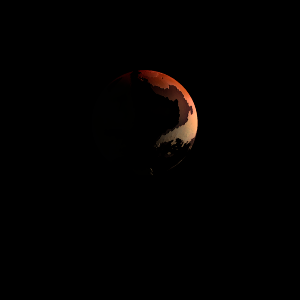|
|
Space Astro
|
Info for exoplanet "Fariiso Ne"
| Scientific (actual) data |
|---|
| Name | Ross 128 b |
| Planet status | Confirmed |
| Mass sini | 0.0044 |
| Orbital period | 9.8658 |
| Semi major axis | 0.0496 |
| Orbit eccentricity | 0.116 |
| Discovered | 2017 |
| Updated | 2017-11-17 |
| K | 1.39 |
| Temperature (kelvin) | 256 |
| Publication | Published in a refereed paper |
| Detection type | Radial Velocity |
| Mass measurement type | Radial Velocity |
| Star name | Ross 128 |
| Right ascension | 176.93° |
| Declination | 0.8° |
| Mag v | 11.15 |
| Star distance | 3.3806 |
| Star metallicity | -0.02 |
| Star mass | 0.168 |
| Star radius | 0.1967 |
| Star sp type | M4V |
| Star age | 5 |
| Star temperature | 3192 |
| Star alternate names | FI Vir, GJ 447 |
| Wikipedia article | Ross 128 b |
Back
| |
| Fictional info (?) |
|---|
| Suggested name | Fariiso Ne |
| Planet type | Warm planet |
|
| Atmosphere | Carbon monoxide | 33% |
| Nitrogen | 26% |
| Xenon | 20% |
| Krypton | 10% |
| Hydrogen peroxide | 9.2% |
| 2H2O | 0.68% |
| Hydrogen | 0.026% |
| Argon | 2.0E-6% |
| Atmospheric pressure | 0.27 bar |
 |
| No known satellites |
| Google search for Fariiso ne |
|
Website by Joachim Michaelis
|
|
|
|